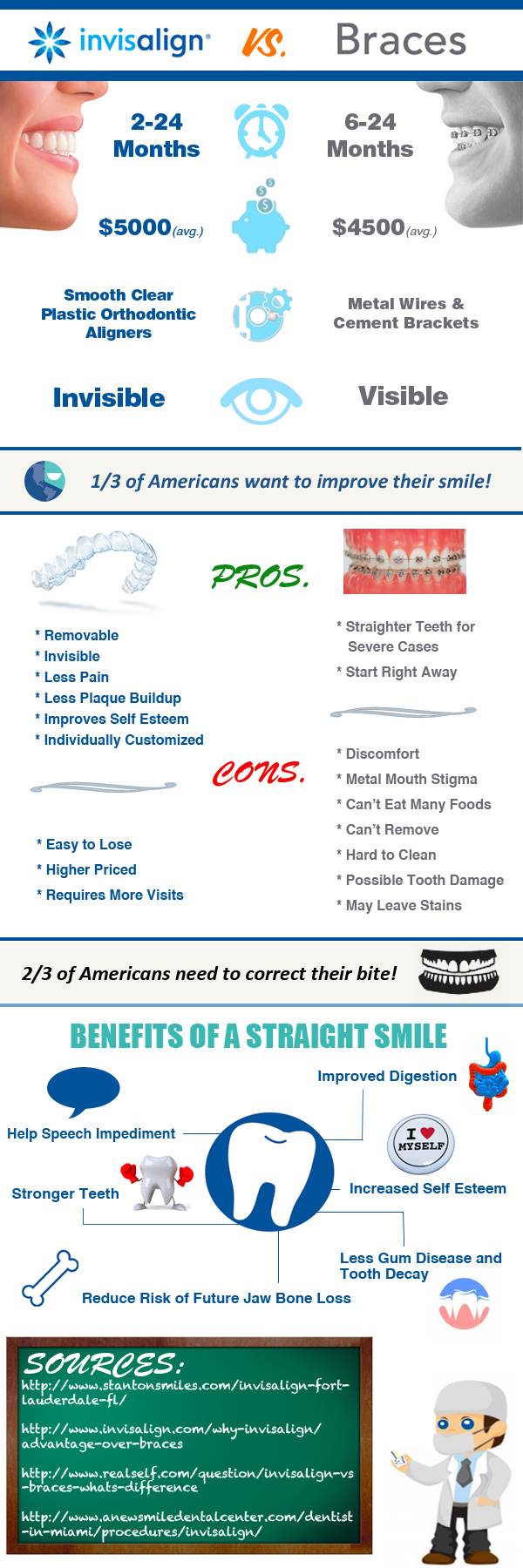A lot of people need to wear braces on their teeth, and it is something that makes a lot of people feel self-conscious. Traditional braces tend to stand out because they are made from metal, however, improvements in modern dental technology saw the launch of an alternative. Invisalign was launched with the promise of achieving the same results as normal braces but without the noticeable braces.
Here are some of the pros and cons of Invisalign.
The Pros
The fact that Invisalign is almost unnoticeable is one of its main attractions, especially for those people that would feel self-conscious about wearing standard braces on their teeth.
There is also the benefit of improved oral hygiene, something that normal braces have a negative effect on. All of that metal work gives bits of food more places to be trapped, and metal braces were often a pain to remove and replace, not to mention clean. However, with Invisalign, the clear trays are easily removed for quick and easy cleaning.
Due to the fact that Invisalign trays are constructed using plastic, people with allergies to metal will not have any allergic reactions, plus there is little chance of cheek and gum irritation either.
The Cons
There needs to be a certain amount of discipline from the wearer, as the aligner trays need to be removed when eating and drinking (except for drinking water). Also, it is important to clean your teeth by flossing and brushing before re-inserting the trays, in addition to which, Invisalign trays need to be worn for a minimum of 22 hours per day.
The trays will need to be changed every 2 weeks on average, compared to 4 weeks for adjustments to more traditional metal braces, so
this means more inconvenience with trips to the orthodontist.
There is a temptation to take new trays out when discomfort occurs, and this may have a negative impact on their effectiveness in the long run.
The main disadvantage to Invisalign is that it is not always suited to all tooth movements, and if a patient has misaligned or crooked teeth, then it is quite possible that these will need correcting prior to using Invisalign.
Hopefully, this article has given you a clearer idea of the benefits and disadvantages of using Invisalign, allowing you to make a decision on whether they are the right solution to your dental problems.
